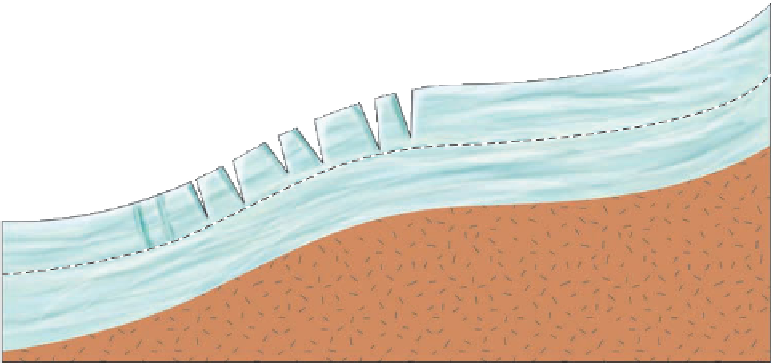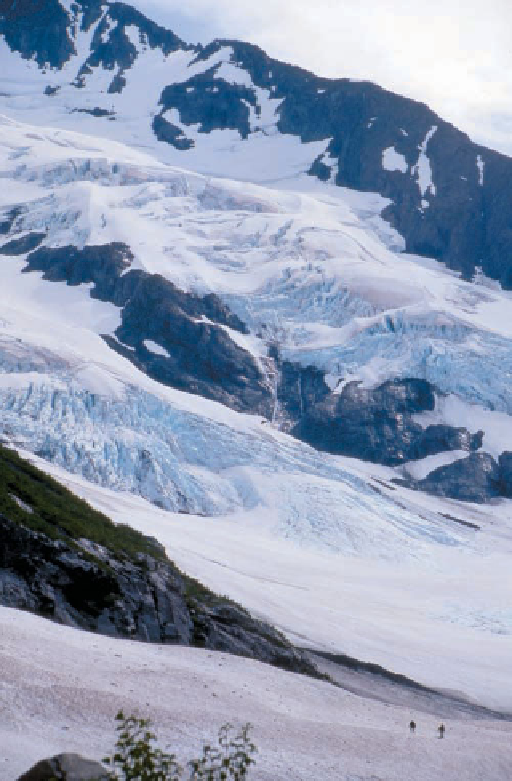Geology Reference
In-Depth Information
◗
Figure 14.6
Crevasses Crevasses are common in the upper
parts of glaciers when the ice is subjected to tension.
Compression
crevasses close
Tension
crevasses open
Brittle
zone
a
Crevasses open where the
brittle part of a glacier is stretched
as it moves over a steeper slope in
its valley.
Zone of
plastic flow
Also, notice in Figure 14.7a that a valley glacier with a
balanced budget transports and deposits sediment at its termi-
nus as a
terminal moraine
. At a later time, the same glacier may
have a negative budget, in which case its terminus retreats and
perhaps becomes stabilized again if the budget is once more
balanced. It then deposits another moraine; however, since the
glacier's terminus has retreated, this one is known as a
reces-
sional moraine
(Figure 14.7b). We will discuss moraines and
other glacial landforms later in this chapter.
We used a valley glacier as an example, but the same
budget considerations control the fl ow of ice caps and con-
tinental glaciers as well. The entire Antarctic ice sheet is in
the zone of accumulation, but it fl ows into the ocean where
wastage occurs.
In general, valley glaciers move more rapidly than continen-
tal glaciers, but the rates for both vary from centimeters to
tens of meters per day. Valley glaciers moving down steep
slopes flow more rapidly than glaciers of comparable size
on gentle slopes, assuming that all other variables are the
same. The main glacier in a valley glacier system contains
a greater volume of ice and thus has a greater discharge and
fl ow velocity than its tributaries (Figure 14.2a). Temperature
exerts a seasonal control on valley glaciers because, although
plastic fl ow remains rather constant year-round, basal slip is
more important during warmer months when meltwater is
abundant.
Flow rates also vary within the ice itself. For example,
flow velocity increases downslope in the zone of accumu-
lation until the firn limit is reached; from that point, the
velocity becomes progressively lower toward the glacier's ter-
minus. Valley glaciers are similar to streams, in that the valley
walls and fl oor cause frictional resistance to fl ow, so the ice
in contact with the walls and fl oor moves more slowly than
the ice some distance away (
b
These crevasses are on the Byron Glacier in Kenai Fjords National
Park and Preserve, near Seward, Alaska. Note the two hikers for scale.
Notice in Figure 14.8 that fl ow velocity in the interior
of a glacier increases upward until the top few tens of meters
of ice are reached, but little or no additional increase occurs
after that point. This upper ice layer constitutes the rigid
part of the glacier that is moving as a result of basal slip and
plastic fl ow below.
◗
Figure 14.8).







Search WWH ::

Custom Search